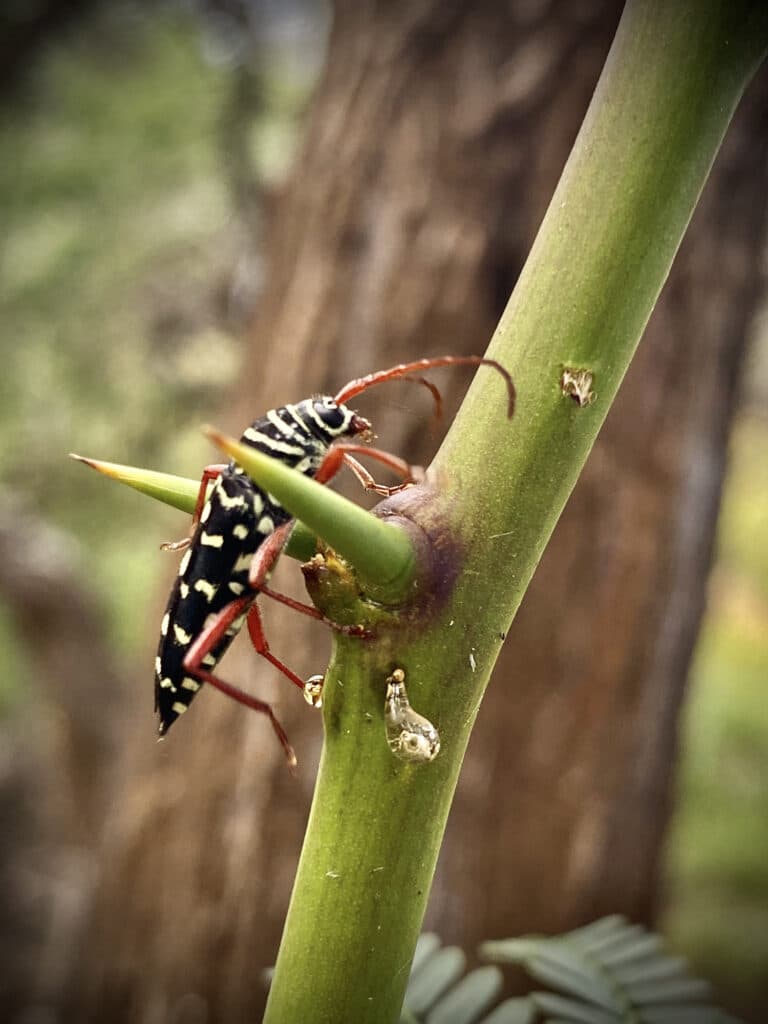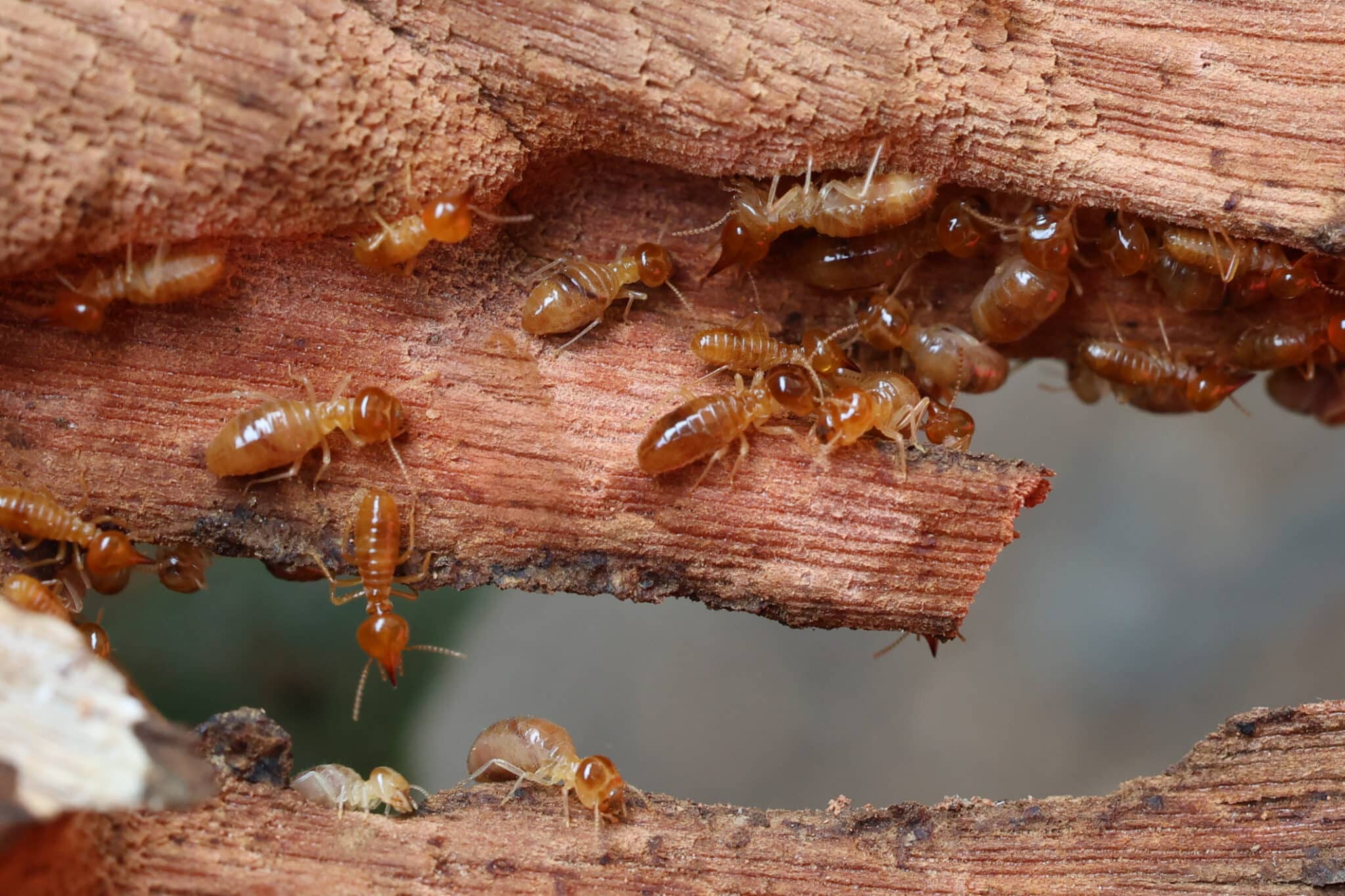As spring arrives in Honolulu, tree pests begin to emerge, posing serious threats to your landscape’s health and beauty. Tree pests can weaken branches, damage bark, and even kill trees if left unchecked during early growth periods. Spotting signs of infestation before spring takes hold can save you time, money, and stress. At Mana Home Services, we help homeowners stay one step ahead of these silent invaders.
Start by checking for discolored or misshapen leaves, which often indicate pest activity hidden within branches or stems. Tree pests like borers and aphids tend to leave small holes, sticky residue, or sawdust-like material behind. Catching these early signs makes controlling infestations much easier and prevents long-term tree damage. Regular monitoring throughout March ensures you are ready before the pests multiply.
Honolulu’s warm, humid climate allows tree pests to thrive earlier than in colder regions, so proactive care is essential. Trees already weakened from winter storms are especially vulnerable to pests and disease. By inspecting bark, branches, and soil now, you will strengthen your trees before growth accelerates. Early intervention is key to a pest-free spring.
Do not wait until the damage is done, be vigilant now to keep your trees healthy and growing strong. Tree pests may be small, but their impact can be massive if ignored.
Common Tree Pests to Watch for in Honolulu
Tree pests thrive in Honolulu’s warm, tropical climate, especially as spring approaches and new growth begins to emerge. These pests often hide in plain sight, causing damage before you even realize they are present. Recognizing which pests to watch for is the first step in keeping your landscape healthy. Here are the most common culprits found in local trees:
-
Termites
These pests bore into wood, causing internal decay that weakens the tree’s structure from the inside out.
-
Aphids
Tiny and green or black, aphids cluster on new growth and secrete sticky honeydew, which leads to mold and fungus.
-
Scale Insects
These look like small bumps on stems or branches, quietly feeding on sap and leaving trees looking wilted or stunted.
-
Tree Borers
Borers drill round holes in trunks or limbs, signaling internal tunneling that often causes branches to die back.
Each of these tree pests can cause serious harm if not identified and treated early in the season. Honolulu’s climate allows these pests to multiply quickly, making vigilance critical. Begin inspecting your trees now to stay ahead of infestations. Early detection leads to stronger, healthier growth all season long.
Early Signs Your Trees May Have a Pest Problem
Catching tree pests early can make all the difference in how well your trees handle the spring growing season. Honolulu’s climate encourages fast pest reproduction, so early detection helps prevent widespread damage. You will want to inspect your trees in March before new growth begins. Keep an eye out for these common warning signs:
- Discolored or curling leaves: Sap-sucking pests like aphids or scale insects often cause leaves to twist, yellow, or fall off early.
- Small holes in bark: Borers and termites leave round exit holes that signal internal tunneling and structural weakening.
- Sticky residue or mold: Honeydew left by aphids attracts mold growth and can make leaves appear shiny, sticky, or darkened.
- Webbing or frass: Fine, sawdust-like material or webbing around branches suggests pests are feeding or laying eggs nearby.
These signs may seem minor, but they often signal larger problems developing beneath the surface. Slow growth, dieback, or sparse foliage can follow if pests go untreated. In Honolulu’s warm, humid weather, issues escalate quickly. That is why frequent checks now are essential.
Recognizing pest problems early allows you to act fast and protect your trees before real damage begins.
Why Tree Pests Love Honolulu’s Climate
Honolulu’s warm, humid climate creates ideal conditions for tree pests to thrive year-round, especially during early spring growth periods. Pests become more active in March as rising temperatures trigger feeding and reproduction cycles. Without proper monitoring, infestations can spread rapidly through stressed or weakened trees. Understanding this environment helps you take the right steps to protect your landscape.
Tropical climates like Honolulu’s provide consistent moisture and warmth, both of which pests rely on to survive and multiply. Unlike colder regions, trees here rarely go fully dormant, making them constant targets for pests. Rain and humidity increase fungal growth, which attracts insects that feed on weakened bark and leaves. These conditions combine to make early spring especially risky.
Pests in Honolulu also benefit from fewer natural predators than in other regions, which lets populations grow unchecked. Invasive species can spread easily from yard to yard if left untreated. If your trees show signs of stress, pests are more likely to attack them first. That is why healthy maintenance is key in this climate.
Knowing how local weather influences tree pests gives you a strategic advantage. Prepare now so your trees grow strong and remain pest-free all season long.
How Tree Pests Damage Growth in Early Spring
Tree pests pose a serious threat to new growth during Honolulu’s early spring, especially when left unchecked in vulnerable trees. As trees begin budding and pushing out fresh foliage, pests feed aggressively on that tender growth. Their activity weakens developing limbs and disrupts nutrient flow throughout the tree. If ignored, these infestations can slow or completely halt healthy spring development.
Aphids and scale insects suck sap from young leaves and stems, causing them to curl, yellow, or drop off prematurely. Borers tunnel through branches, damaging internal tissues that transport water and essential nutrients. As a result, affected limbs often wilt or fail to sprout leaves altogether. Termites attack the trunk and roots, compromising stability from the ground up.
Each pest targets a different part of the tree, creating layered damage that worsens quickly with time. Young trees and those recovering from storm stress are especially at risk during March. Honolulu’s steady warmth encourages pests to spread rapidly if not dealt with early. Spotting damage as it begins makes all the difference.
By stopping tree pests early, you give your trees a strong head start on spring growth. Do not let small insects block big seasonal gains.
Where Tree Pests Hide Before Spring Arrives
Tree pests do not disappear in winter, they hide in sheltered areas, waiting for spring warmth to return. In Honolulu’s mild climate, pests often remain active during cooler months, settling in bark crevices, soil, and under leaves. These hidden pests can multiply quietly, ready to emerge and feed once spring growth begins. Understanding their hiding spots helps you catch infestations before they explode.
Look closely at the base of trees, where pests often burrow into the soil or nest in exposed roots. Loose bark, cracks, and pruning wounds provide perfect entry points for borers and termites. Dense foliage or tangled branches also offer shelter for aphids and scale insects. Even leftover plant debris can host overwintering pests that reappear in March.
Because Honolulu does not experience hard freezes, pest survival rates stay high throughout winter months. This gives them a head start as temperatures rise, which puts your trees at immediate risk. Early inspections should include trunk surfaces, undersides of branches, and soil around the base. Detecting early movement or eggs now is critical.
Knowing where tree pests hide gives you the upper hand. With smart observation and timely care, you can stop pests before they damage spring growth.
How to Safely Inspect Trees for Pests in March
March is the perfect time to inspect your trees for pests before spring growth fully begins in Honolulu’s tropical climate. Early inspection allows you to catch problems while they are still manageable. Safe, simple checks performed now can prevent bigger issues later in the season. You do not need special tools, just careful observation and consistency.
Start by walking around each tree and looking at the trunk, branches, and canopy for any signs of damage or discoloration. Gently peel back loose bark or check for small holes, sap, or frass, clear indicators of pest activity. Use gloves when handling tree surfaces to avoid injury and contamination from pest residues. Pay close attention to younger trees, as they are most vulnerable during early spring.
Examine the base of trees and surrounding soil for unusual movement, webbing, or signs of tunneling. Be especially alert after rainfall, which brings pests to the surface. Honolulu’s wet March weather often activates hidden pests, making them easier to spot. Repeating inspections every two weeks helps ensure thorough monitoring.
By inspecting your trees safely and regularly, you gain valuable insight into early pest activity. Early detection gives you time to respond before pests take hold and damage sets in.
Tree Pests or Natural Changes? How to Tell the Difference
Spring brings many changes to your trees, but not all of them are signs of tree pests. In Honolulu’s mild climate, trees may show new growth, shed leaves, or heal from past stress. These shifts can easily be mistaken for pest damage, so it is important to know the difference. Here are key ways to tell them apart:
-
Natural change
Leaf shedding or yellowing occurs gradually and usually affects the tree evenly.
-
Pest damage
Curling, spotty, or misshapen leaves tend to appear in patches or isolated branches.
-
Natural growth
New buds and shoots look consistent, strong, and evenly spread across branches.
-
Pest activity
Look for sticky sap, small holes in bark, or blackened stems, which often point to insect infestations.
Use a journal or photos to monitor tree changes over time, this helps spot new, unusual patterns. Honolulu’s year-round growth means pest damage might be easier to miss without consistent tracking. If changes happen fast or seem uneven, pests may be to blame. Trust your observations.
By learning to separate normal behavior from tree pests, you will react quickly and correctly, keeping your trees healthy throughout the spring season.
How Healthy Trees Resist Pest Infestations
Healthy trees are your best defense against tree pests during Honolulu’s spring season when pest activity rises with warmer weather. Strong, well-maintained trees can naturally resist or recover from minor infestations faster than stressed ones. Their sturdy bark, vibrant leaves, and robust root systems help block pests from gaining a foothold. That is why consistent tree care matters year-round.
Trees with proper watering, nutrition, and pruning tend to produce natural chemicals that repel pests and prevent widespread damage. Thick, unbroken bark protects internal tissues from borers and termites. Healthy root systems support steady growth, giving trees the strength to push back against insect attacks. Clean, open canopies allow better airflow, reducing moisture buildup that attracts bugs.
Neglected trees, on the other hand, are more likely to show early signs of stress, making them easy targets. Honolulu’s heavy rainfall and warm nights can worsen conditions for weakened trees, especially those with poor drainage. Regular mulching and fertilizing keep trees balanced and prepared. Preventive care is always easier than dealing with infestations after they start.
Building your tree’s natural defenses is one of the smartest moves you can make. Healthy trees fight harder, last longer, and keep pests at bay.
Why Early Pest Control Saves Trees and Money
Addressing tree pests early in Honolulu’s spring can save you both time and costly damage down the road. When left untreated, small infestations grow quickly in our warm climate, spreading to healthy trees and multiplying rapidly. Early detection allows for minimal intervention, protecting your trees without major disruption or expense. Acting fast is both practical and preventative.
Treating minor pest issues early means using fewer products and reducing harm to beneficial insects and surrounding plants. Quick action keeps trees strong, avoiding removal or costly replacements later. It also helps maintain the appearance and value of your property, especially important in Honolulu’s lush neighborhoods. Healthy trees support a healthy landscape, benefiting everything around them.
Spring pests target soft new growth, which makes trees more vulnerable during March and April. Getting ahead of the problem gives you control before pests settle in. Regular monitoring, combined with early treatment, gives trees the best chance to recover fully. It also helps protect nearby trees from catching the infestation.
Tree pests do not go away on their own. The sooner you act, the better your trees will respond, and the less you will spend fixing preventable damage.
When to Call a Professional for Tree Pest Issues
Some tree pest problems in Honolulu require more than a watchful eye and quick treatment, sometimes, expert help is essential. If pests keep returning, damage spreads quickly, or multiple trees are affected, it is time to call a professional. Certified arborists have the experience and tools to identify pests and apply targeted solutions safely. Their knowledge protects your trees and saves time.
Professionals know which pests are common in Honolulu’s neighborhoods and how to handle them based on tree type and severity. They can inspect hidden areas, apply precise treatments, and recommend long-term prevention strategies tailored to your yard. If you are unsure whether damage is pest-related or natural, an expert diagnosis gives peace of mind. You won’t risk misidentifying the issue or treating it incorrectly.
Serious infestations often require special equipment or chemical treatments that homeowners should not apply without training. Delaying professional help can lead to tree loss or damage that spreads to other plants. Honolulu’s dense vegetation and close residential layouts make timely service even more critical. Quick action prevents widespread impact.
Calling a professional when needed ensures the health of your trees and landscape. Do not wait until pests take over, expert help makes all the difference.
Protect Your Trees from Pests Before Spring Growth Begins
Spring growth brings beauty and new life, but it also signals the return of tree pests across Honolulu’s lush landscapes. Staying ahead of these pests ensures your trees stay healthy, strong, and vibrant through the season. Simple actions like early inspections, regular maintenance, and calling in help when needed can prevent major damage. Do not let pests steal your trees’ potential.
Now is the perfect time to walk your yard, observe your trees, and check for early signs of pest activity. Honolulu’s warm March weather wakes up pests fast, so quick action protects your trees before growth surges. Keep a close eye on new leaves, branch tips, and bark, these areas often show the first signs of trouble. Healthy trees reward your attention with strong, steady growth.
If you are unsure what to look for or think a problem is developing, Contact Mana Home Services for professional support. We understand Honolulu’s unique climate and know how to protect trees in every neighborhood. Our team can identify pests, offer treatment, and ensure your trees are ready for spring.
By staying alert and proactive, you give your landscape the best chance to thrive. Tree pests won’t wait, and neither should you.
Frequently Asked Questions About Tree Pests
What are the most common tree pests in Honolulu?
Honolulu’s climate attracts pests like termites, aphids, scale insects, and borers. Each type damages trees differently and needs specific treatment.
When should I start checking for tree pests in spring?
Begin inspections in early March, as Honolulu’s warm weather causes pests to become active sooner than in colder areas.
How do I know if tree damage is caused by pests or natural changes?
Pest damage usually appears in patches, with signs like holes, sticky residue, or webbing. Natural changes are more uniform and gradual.
Can healthy trees still get pests?
Yes, but healthy trees are more resistant and recover faster. Regular care reduces the chances of serious infestations.
When should I call a professional for help?
If pests keep returning, damage is widespread, or you are unsure about the issue, call a certified tree care expert for proper diagnosis.



